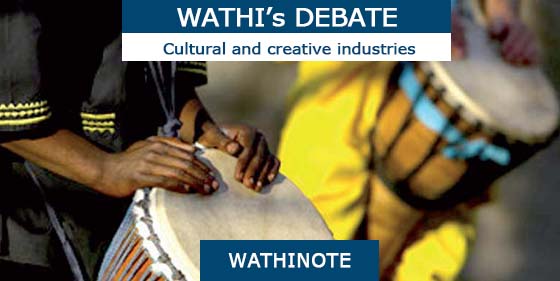

Author: Gladys Ijeoma Akunna
Site of publication: The Conversation
Type of publication: Article
Date of publication: July 7th, 2021
Recent disturbing events in different regions of the world poignantly reveal how the creative arts can contribute to making sense of difficult situations and stressful times. This is particularly true of performance art.
Performance art provides ways of seeing, thinking, expressing and mindfulness. It highlights the idea that human beings, regardless of race, class or gender, have creative forces within them.
In African societies, including Nigeria, the use of the creative arts as political tools of assertion in crises is not new. This includes dance, music, art and drama.
For example, in colonial Nigeria, the famous Aba Women’s riot of 1929 is still a reference point. Tens of thousands of militant, resilient, scantily clad or nude women engaged with a highly charged protest dance. They forced the colonial government to change its system of governance in southeastern Nigeria.
More recently Nigeria’s #ENDSARS in October 2020 represented a similar example of public protest as art.
Many Nigerians see their country as a failing state. This is due to the steady downhill slide of the economy and vanishing resources, dilapidated social amenities, massive unemployment, violence, insurgencies, mounting poverty and police brutality. It also includes the highhandedness of those in power.
Creative art therapies
In 2015, at the Institute of African Studies, University of Ibadan I successfully defended the first clinical trial experimental research in dance and movement therapy as an aspect of creative arts therapy in Nigeria. My research tested and validated the effectiveness of dance and movement therapy treatment in adult inpatients suffering from schizophrenia and depression.
The subjects in the research learnt to trust and use art as a tool to connect to themselves. They were able to get quantifiable levels of improvement in health.
Similarly, Nigerians in the #ENDSARS protests intuitively embraced improvised art making for the release of pain and anguish, and for mustering strength for survival.
The popular adopted slogan for the protests was sorosoke, a Yoruba word which translates as “speak up”. Apart from its political connotation, it was also a group therapy engagement.
The therapeutic space of this event lasted a few weeks. During this time millions of Nigerians in large groups performed for their mental health.
Nigeria’s heavily burdened and impoverished population has been publicly branded as “lazy” and good-for-nothing citizens with no goals or aspirations.
But through their many united voices and bodies they became powerful and they found voice. Hence the importance of the slogan sorosoke.
Experts in the field of mental health agree that to have a voice is as much a part of daily living as it is of therapy. It signifies self-awareness and active agency and participation in staying healthy and productive.
Artmaking and the search of mental health in #ENDSARS
At the turn of the 20th century, and building on earlier research, the neurologist Sigmund Freud founded psychoanalysis – or the talking therapy – as a medical breakthrough in traditional psychotherapy. His approach has since become a vital aspect of the fields of psychiatry and mental health.
The #ENDSARS protests are a good example of this. They incorporated and presented potent, meaningful visual, verbal, non-verbal art displays and an overall visual quality. These yielded some measure of pleasure to both the performers and spectators. These powerfully interactive and meaningful performances were densely psychotherapeutic in form and content
Freud also founded other significant theories including the theory of sublimation.
As a theory, sublimation is central to psychoanalytic theory about the arts.
Freud’s analysis of literal and visual narratives of great artists was based on psychological nuances and influences of consciousness and beingness. To him, the subjective domains were symbolic communication of libidinal drive or fulfilment of these desires.
Beyond this, it was his critical evaluations of the experience of unconscious conflicts and their expression through the process of sublimation that laid the foundation on which the psychoanalytical study of art and the artist evolved.
For Freud, and countless other examples, including those in Nigeria, the channelling and communication of stored painful memories can be released through a work of art – a socially acceptable form of creativity.
Equally significant is the symbolic form – or aesthetic appearance – of the work of art which meaningfully camouflages the hideous elements of consciousness, yielding some measure of beauty, enjoyment and appreciation.
The #ENDSARS protests are a good example of this. They incorporated and presented potent, meaningful visual, verbal, non-verbal art displays and an overall visual quality. These yielded some measure of pleasure to both the performers and spectators. These powerfully interactive and meaningful performances were densely psychotherapeutic in form and content.
The protests rejected the irrational continual denial of the tragic realities in Nigeria’s socio-political landscape. Rather it was a creative way for the battered bodies and minds of Nigerians to confront their harsh, unfriendly environment.
And it paved the way for healing, vitality and a new vista of productive life.
Les Wathinotes sont soit des résumés de publications sélectionnées par WATHI, conformes aux résumés originaux, soit des versions modifiées des résumés originaux, soit des extraits choisis par WATHI compte tenu de leur pertinence par rapport au thème du Débat. Lorsque les publications et leurs résumés ne sont disponibles qu’en français ou en anglais, WATHI se charge de la traduction des extraits choisis dans l’autre langue. Toutes les Wathinotes renvoient aux publications originales et intégrales qui ne sont pas hébergées par le site de WATHI, et sont destinées à promouvoir la lecture de ces documents, fruit du travail de recherche d’universitaires et d’experts.
The Wathinotes are either original abstracts of publications selected by WATHI, modified original summaries or publication quotes selected for their relevance for the theme of the Debate. When publications and abstracts are only available either in French or in English, the translation is done by WATHI. All the Wathinotes link to the original and integral publications that are not hosted on the WATHI website. WATHI participates to the promotion of these documents that have been written by university professors and experts.
